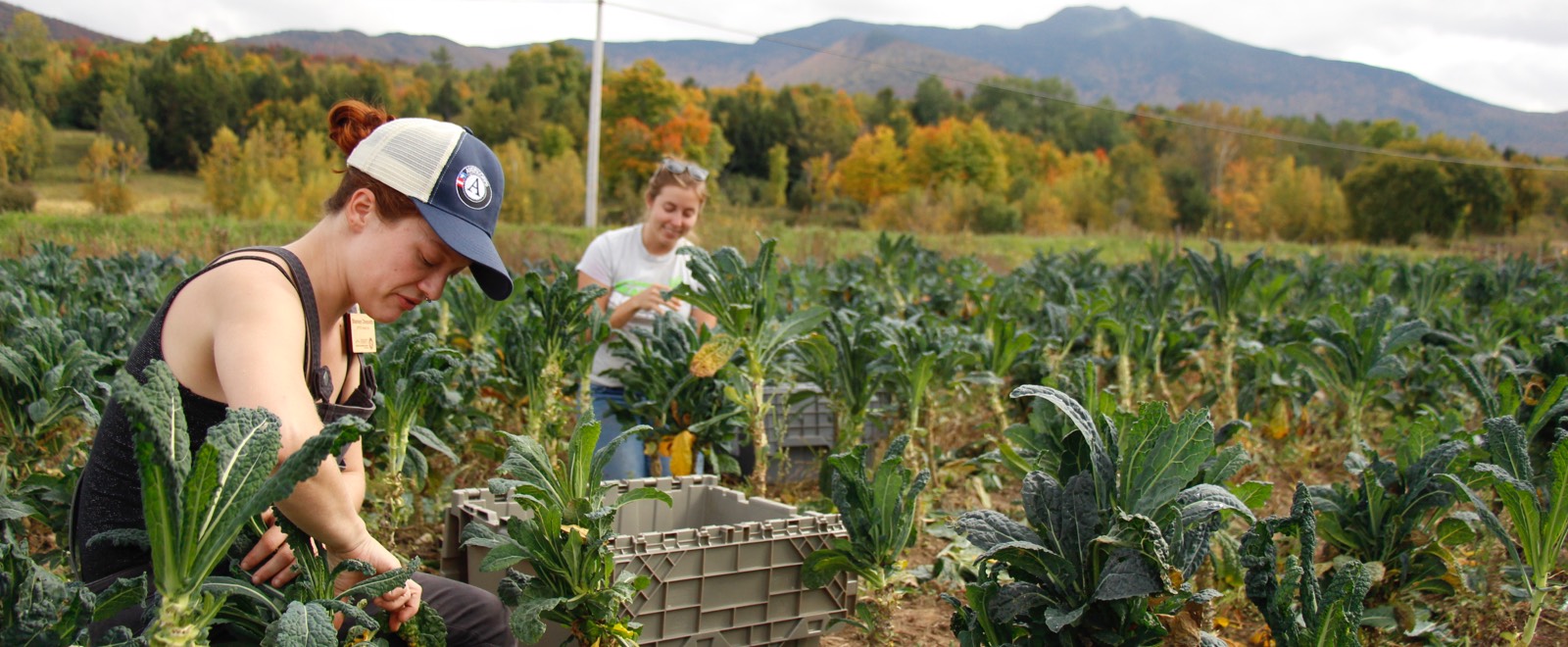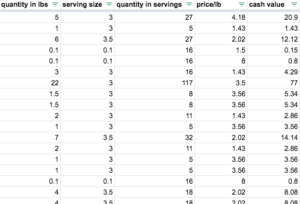
What Stories Do Numbers Tell?
08 Jul 2021, by Admin in Harvest Blog, Northeast Kingdom Waste Management DistrictGillian D’Acierno is a Harvest VISTA serving in Vermont with Northeast Kingdom Gleaners, a new gleaning program in the state’s Northeast Kingdom, a tri-county region nestled against New Hampshire and Quebec. On inspiration, insecurity, and success metrics.
Two thousand pounds of squash gleaned! Ten thousand trees planted! One million servings distributed! Community fed and hunger ended!
There are a lot of organizations out there doing amazing work. Their success in reducing food loss/waste, supporting local farms, and promoting food sovereignty is what recently inspired the launch of a new gleaning program in the Northeast Kingdom region of Vermont. Their eye-popping stats serve as proof of what gleaning can achieve, which not only has helped Northeast Kingdom Gleaners secure seed funding, but also inspires us to dream big, knowing that we have the power to do amazing work in our community.
 But sometimes it’s easy to look at those numbers and wonder how the heck Northeast Kingdom Gleaners will ever get there. Can we really go from moving a few pounds of produce to hundreds or even thousands? It’s already logistically challenging to efficiently gather, store, and distribute just a few boxes of produce each week. Imagine trying to move truckloads of food.
But sometimes it’s easy to look at those numbers and wonder how the heck Northeast Kingdom Gleaners will ever get there. Can we really go from moving a few pounds of produce to hundreds or even thousands? It’s already logistically challenging to efficiently gather, store, and distribute just a few boxes of produce each week. Imagine trying to move truckloads of food.
These are the moments when we must remind ourselves that Northeast Kingdom Gleaners is approximately three months old, about the same age as that squash that will soon be so abundant here in Vermont. It’s silly to compare ourselves to programs that have been building relationships and refining their operations over the course of years and decades.
We also remind ourselves that big numbers are not the big goal. Numbers are a conveniently succinct way to demonstrate the success of our activities and the growth of our program. They’re an objective way to state our impact. But pounds or servings, gross or net, raw or percent, humbly small or eye-poppingly huge, numbers are never the whole story. It’s possible that Northeast Kingdom Gleaners will never get to the point of gleaning thousands of pounds of squash in one afternoon. Will that mean we’ve failed? No!
Maybe our particular geography wouldn’t support such a scale, or maybe the stars of growing conditions and markets will align, allowing farmers to harvest and sell all that squash. We’d be thrilled for them! Our ultimate goal is not to glean X pounds of produce but to build a more participatory food system and a community where we rely more on our neighbors and less on faraway food, policies, and markets. We’ll continue to weigh our boxes, count the number of programs/people served, and conduct surveys, because numbers help round out our story and keep us on track. Plus, we kind of need them for everything, from sending farmers documents to use for tax purposes to completing reports for funders. But we won’t let numbers become our whole story, because that’s not the story of our community.
Which leads us to a parting question… stories are data, too, right? They’re qualitative data. Can we develop systems, from needs assessments to success metrics, that give qualitative data the equal standing that they deserve, rather than relegating them to a colorful bonus section meant only to round out the hard facts of quantitative data? Often we treat stories as an interesting but unreliable source of information, compared to the objectivity of numbers. But people create both stories and numbers, and neither is more or less true than the other. How can we use both quantitative and qualitative data to share the impact of our work? As community organizations, can we develop modes of data collection and reporting that emphasize the multi-dimensional truths of our communities?


